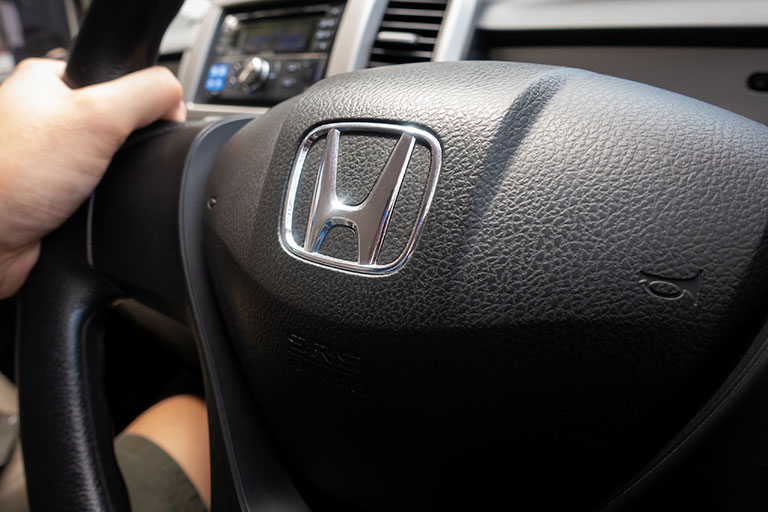The Honda Odyssey makes innovative use of advanced high-strength steels (AHSS) to increase passenger safety and improve fuel efficiency
In North America, people carriers, or minivans, are big business, as they are in many other global regions. The sheer family-friendly practicality of the minivan has ensured its enduring popularity in the US – and one of the most popular models of all is the highly-rated Honda Odyssey.
Considered the market-leading three-row minivan in the US and Canada, this fifth generation model was fully developed in North America by the Honda R&D Americas, Inc. development team. The project was based at the Ohio R&D centre, the company’s largest such site outside of Japan. This is where the development leadership team were located, and where engineering development was conducted. Both the Odyssey concept and its exterior and interior design, however, were conceived at the Honda R&D Americas Los Angeles Studio.
“The latest Odyssey… was a high watermark for maximising steel part, joint and joining, and load path efficiency.”
Peter Cardimen is performance development leader for the fifth-generation Honda Odyssey. The vehicle, he explains, is based on the Honda global light truck platform, and utilises their latest-generation Advanced Compatibility Engineering (ACE) body structure. This helps optimise passive safety even in collisions with much larger, heavier American-sized pickup trucks. It is also a unibody design – where the frame, floor-plan and chassis are formed as a single structure – which aids quality and durability.
“From a body perspective, we knew going into the development that we would need to use more high strength steel for both performance and weight reduction,” explains Cardimen, “and to push our design engineers to maximise the weight-down and performance-up of every part and load path.”
Cardimen is certain about the key role advanced steel engineering played in the project. “If I were to state plainly what the key technology or material development was behind the latest Odyssey, it was a high watermark for maximising steel part joint and joining, and load path efficiency. We brought an incredible amount of development attention to every part and path, and all our latest simulation capability for global body validation of these incremental gains.”
 The Odyssey uses Honda’s Advanced Compatibility Engineering (ACE) body structure
The Odyssey uses Honda’s Advanced Compatibility Engineering (ACE) body structure
Reliant on steel
As much as 58 percent of the fifth-generation Odyssey is made from advanced high-strength steel. It is used for key structural elements of the vehicle, which means the A-frames, door sections and bumper beams can be reduced in size. This helps improve driver visibility without impacting on occupant protection. Just one percent of the vehicle structure is made from aluminium.
“We don’t view the use of steel as having reached some pinnacle of potential performance.”
“We don’t view the use of steel as having reached some pinnacle of potential performance,” says Cardimen. “We always say that it’s about the right material at the right location. As a company, we’re not afraid to develop mixed material designs where necessary, or push ourselves to eke out maximum performance from more traditional materials.”
Increased use of structural adhesives was also important, said Cardimen. They gave 5kg of weight savings, “but even more importantly, allowed us to fully realise the right material strength and shape for the overall body design as a system”.
Designed to last
The fact it’s a minivan presented its own particular challenges for the Odyssey engineering team. “If you think about the functional nature of a minivan, there aren’t any significant areas where you can cut corners, or sacrifice strength or rigidity. Nearly every portion of the vehicle has an occupant function or requires dynamic capability. Add to that our desire for elements like Odyssey’s flat floor, and lower-strength materials with rigidity became less effective solutions.”
Which is why the decision to use steel for the vast majority of the body was integral to the design, says Cardimen. This enabled a focus on applying innovative material engineering in targeted areas. “We used methods Honda pioneered, like the tailor laser-welded, hot-stamped door ring. That allowed us to produce an item with industry-leading strength, and apply ideal section thickness for optimal strength and dynamic performance. We get all of the strength, yet also minimise the weight.”
“From a body perspective, we knew going into the development that we would need to use more high strength steel for both performance and weight reduction.”
Such techniques, stresses Cardimen, allowed the design team to use steel in a way in which design decisions are not made based on maximum weight or minimum strength. Rather, they use steel at the ideal specification throughout the design. Structural optimisation techniques were also important. “They are often applied when structural elements are required to make up for strength drawbacks of other materials,” adds Cardimen.
The innovative use of AHSS allowed Honda to fully optimise the Odyssey for its target market – families. Appealing to the budget-conscious was particularly important, “as we find that a third child is the transition point from a two-row SUV or sedan into Odyssey ownership.
“By their nature, minivans are family or group vehicles. There’s a lot of activity going on in the cabin, and a lot of utility required from the vehicle. We wanted childcare, cleaning up, passenger comfort, all to be easy, and for functionality to be top-of-class.” But the driver wasn’t forgotten, added Cardimen. “We wanted them to be able to focus on driving, with a responsive vehicle that’s easy to control.
“The Odyssey had to be premium, progressive and sporty.” A measure of the engineering team’s success is not just the vehicle’s best-selling status, but also its numerous five-star ratings from automotive reviewers. It’s a genuine advanced steel engineering success story.
Images: istock